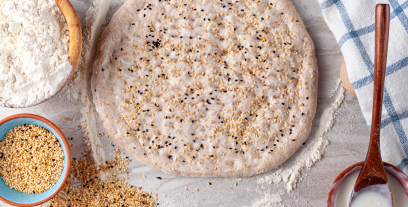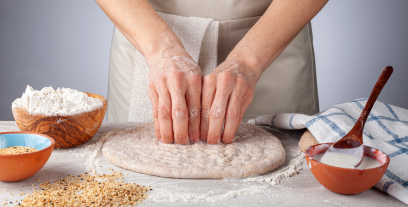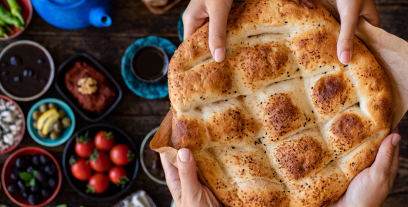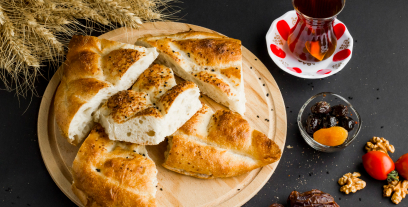With the arrival of Ramadan, Ramadan pita, which adorns our tables and accompanies our special evenings, holds a special place among our traditional flavors. Every year, the making of Ramadan pita, reflecting the spirit of this sacred month, comes to life again with love in our homes. For those in search of a Ramadan pita recipe, practical information on how to prepare the pita can be found in this article.

Ramadan pita, symbolizing the Ramadan month and being an indispensable part of iftar tables, stands out with its special recipes. The necessary ingredients for the Ramadan pita recipe consist of basic elements that can be found in everyone's kitchen. Among the main components are flour, water, dry yeast, sugar, salt, and olive oil. Some Ramadan pita recipes also recommend additional ingredients such as mahaleb or yogurt to enrich the traditional flavor.
Here are the ingredients you need for making Ramadan pita at home:

To answer the question of how to make homemade Ramadan pita, first, prepare your necessary ingredients. The process of making Ramadan pita at home begins with preparing the dough for the pita.
First, mix warm water and yeast in a bowl, add sugar on top, and wait for the yeast to activate. Then add the flour and make a well in the middle, add salt, olive oil, and activated yeast. Start kneading the dough. When your dough reaches the desired consistency, cover it with a damp cloth and let it ferment in a warm place for about an hour.
You may be interested in: A Delicious Güllaç Recipe for Iftar
Once the dough has risen, divide it into two pieces and shape each piece into a round pita. Make light incisions on the pitas with a knife and sprinkle sesame and nigella seeds. Finally, bake your pitas in a preheated oven at 200 degrees Celsius for about 20-25 minutes until they turn golden brown. That's it, homemade Ramadan pita making is that easy!

The process of making Ramadan pita is a delightful part of the homemade Ramadan pita (pide) recipe. The dough for a delicious Ramadan pita is of great importance. First of all, pay attention to the temperature of the warm water for the fermentation process; water that is too hot can kill the yeast, while water that is too cold can slow down the fermentation process.
To prevent the dough from sticking to your hands while kneading, you can use a small amount of olive oil. The kneading process enhances the development of gluten, which increases the elasticity of the dough, resulting in a softer pita.
Pressing lightly on the fermented dough to release the gas helps it rise more evenly during baking. Also, making light incisions on the pitas and sprinkling sesame and nigella seeds give the Ramadan pita its distinctive appearance and flavor. These tips are essential steps to achieving success in making Ramadan pita.

Ramadan pita is one of the iconic flavors of the Ramadan month and is considered an indispensable part of iftar tables. The calorie amount of this delicious bread is one of the curious subjects. The making of Ramadan pita (pide) is carried out using traditional methods and with a specific Ramadan pita recipe. The amount and type of ingredients used during this process can directly affect the calorie value of the pita.
Generally, one slice of Ramadan pita (approximately 100 grams) varies between 250 to 300 calories. These values may vary depending on the size of the pita, the added toppings, and the cooking method. To have a healthy Ramadan month, it is important to pay attention to the amount of pita consumed and not to neglect balanced nutrition.
Recommended For You
The Best Local Flavors of Anta...
Known as the jewel of the Medi...
Read MoreThe Most Popular Local Dishes ...
Gaziantep is known as one of T...
Read MoreQuick and Tasty: Open-Faced Br...
After a long, busy day, your t...
Read More